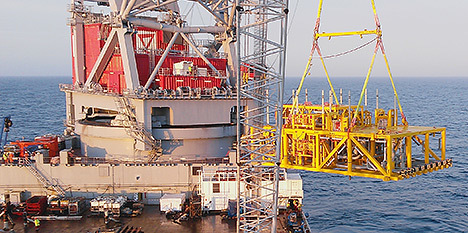
Gullfaks today celebrated 30 years of production.
The Norwegian operator called the development its “trial by fire”.
The oil field was the first to see Statoil act as both developer and operator.
“Gullfaks is a prime example of the best that this industry has achieved in Norway,” said Gunnar Nakken, senior vice president for the operations west cluster.
A total of 2.6 billion barrels of oil have passed through its the loading buoys.
“Wise decisions, outstanding subsurface work, the use of new technology and good team work in the Norwegian petroleum cluster have more than tripled the expected field life and ensured enormous value creation from Gullfaks. After 30 years, we still believe in Gullfaks, which has seen major investments and undergone extensive upgrades in recent years,” added Nakken, who is also Statoil’s site manager in Bergen.
2010 was a turnaround year for the field, which until then was experiencing output decline.
A series of water injection work was carried out and the development is now expected to produce for the next 25 years.
A spokesperson added: “The name Gullfaks comes from “Gullblokken” (the Golden Block), as block 34/10 was known prior to its allocation in 1978. The Golden Block was awarded to a wholly Norwegian group consisting of Statoil (85%), Hydro (9%) and Saga (6%). This would be Statoil and the Norwegian petroleum industry’s baptism by fire. Norwegian industry accounted for nearly 80% of the total investments.
“The first explorations in the 1970s indicated that this was a significant oil and gas reservoir; however, at the time the field was expected to run out not long into the new millennium. Today, the production horizon stretches towards 2040.
“22 December is also the day Statoil opened the valves of its very first subsea well, in Gullfaks, marking the start of an incredible technological development. Statoil has been at the forefront of several of the most important breakthroughs in the subsea industry in the world. Without this technology, it would not have been possible to develop fields such as Åsgard and Troll Oil.
“More satellites have subsequently been linked to Gullfaks: Gullfaks South has been developed with installations on the seabed and came on stream in October 1998, with production of oil and condensate and reinjection of associated gas. Phase two started in October 2001, comprising production and export of gas, linked to the A and C platforms.”
Recommended for you
